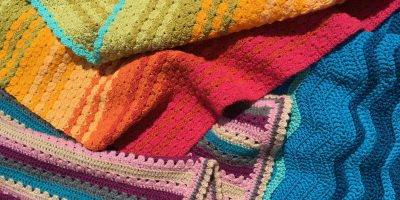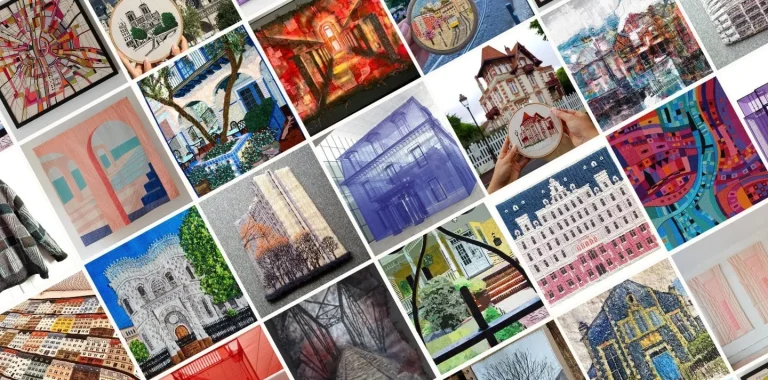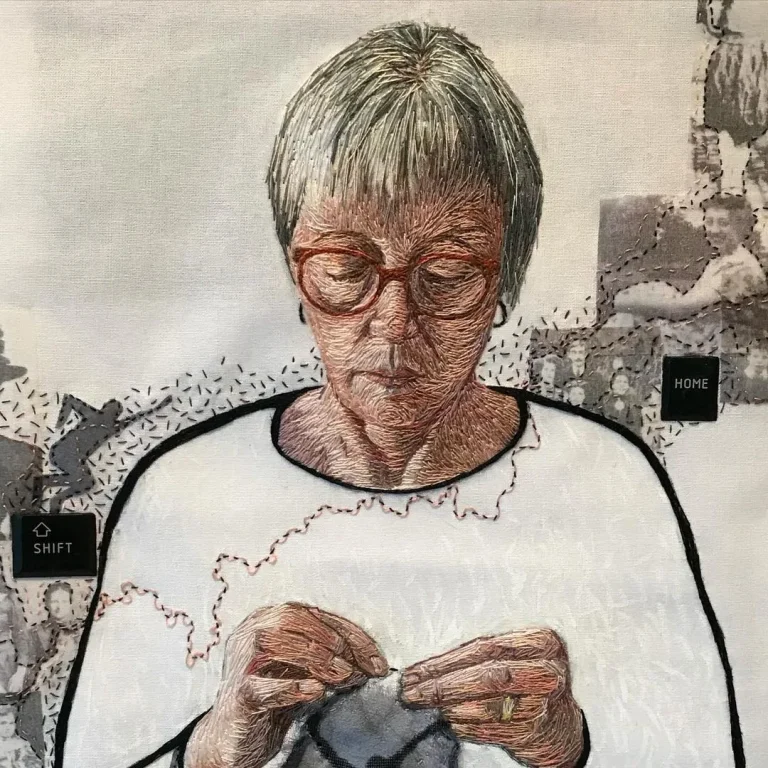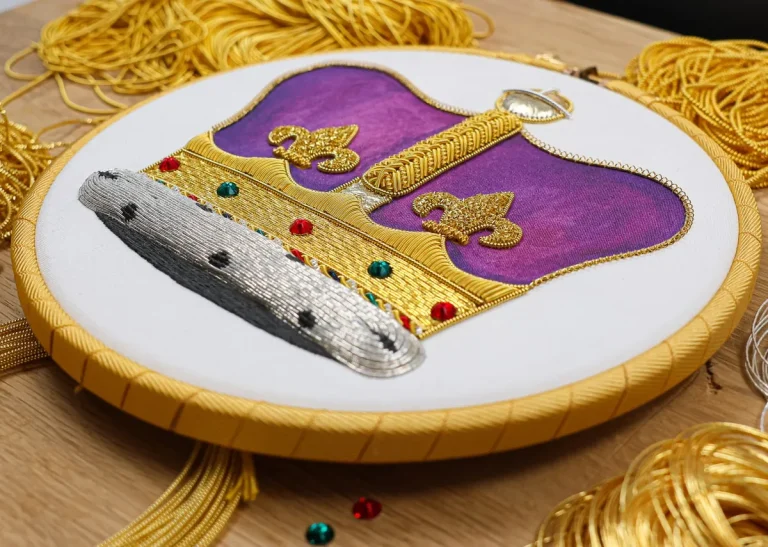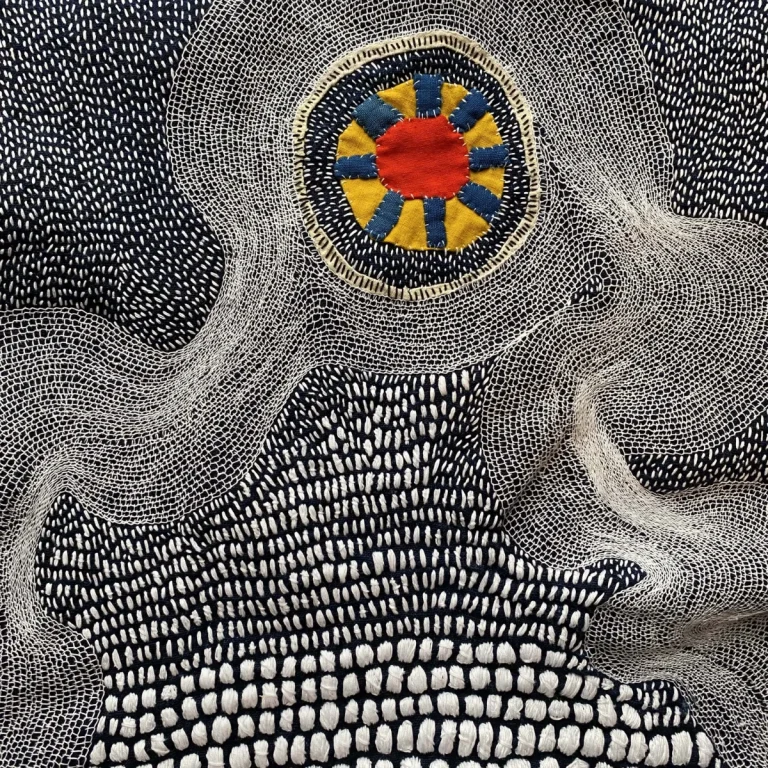
I enrolled on to the Skill Stage 2 Hand Knitting course in May 2018. I have been knitting since I was quite young – on and off – like most people. But it was only when I hit University, over a decade ago now, that I really picked knitting up again, to relax and make clothing that no one else would have.
As you can imagine my skill level was very basic. I only really knew one way to cast on, once I’d called my mum to remind me how to do it, and how to do a basic knit and purl stitch. It served me well for a while because I mostly did rib and stockinette stitch.
After some time trying out the odd new thing, like cabling, I thought it would be good to develop my skills further, but without any patterns to motivate me I thought it would be best to test myself on a course that would really push my boundaries.
After searching online I found a few schools, but the School of Stitched Textiles really stood out for me. I wanted to do an accredited course because you never know what is going to happen in life. Being accredited in skills is always a bonus, and SofST had the bonus for me of providing several levels for hand knitting as well as being City and Guilds accredited.
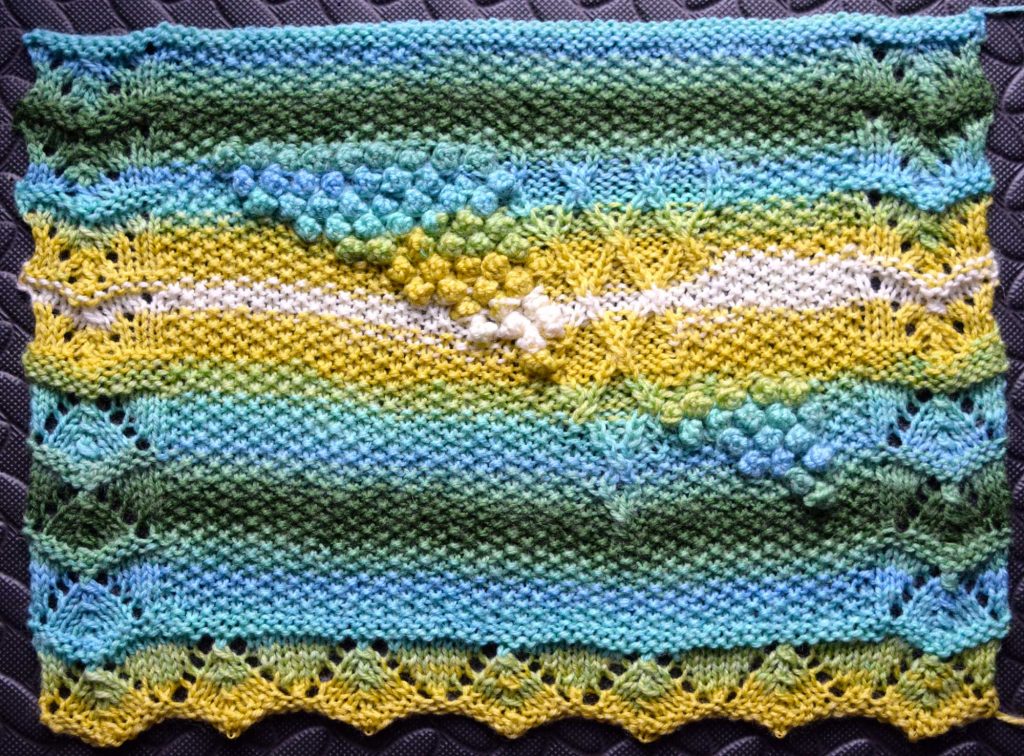
Although I knew I wanted to do a hand knitting course I knew I didn’t want to go too high on the level with other commitments in life and my innate ability to be distracted easily. I also liked the support SofST provided via social media and email. The Facebook videos with Gail were fab for making me feel included whilst also allowing me my independence on the course.
During the course I was quite divided on some of the tasks, but working through them all really helped me to develop my skills and understanding of knitting.
I really enjoyed researching an artist and then using their work as the influence for my work to show how work can develop from one thing to another. For me, being pushed to create experimental samples was the most helpful part of the course. We’d have to use the new stitches I had researched and practised on the course.
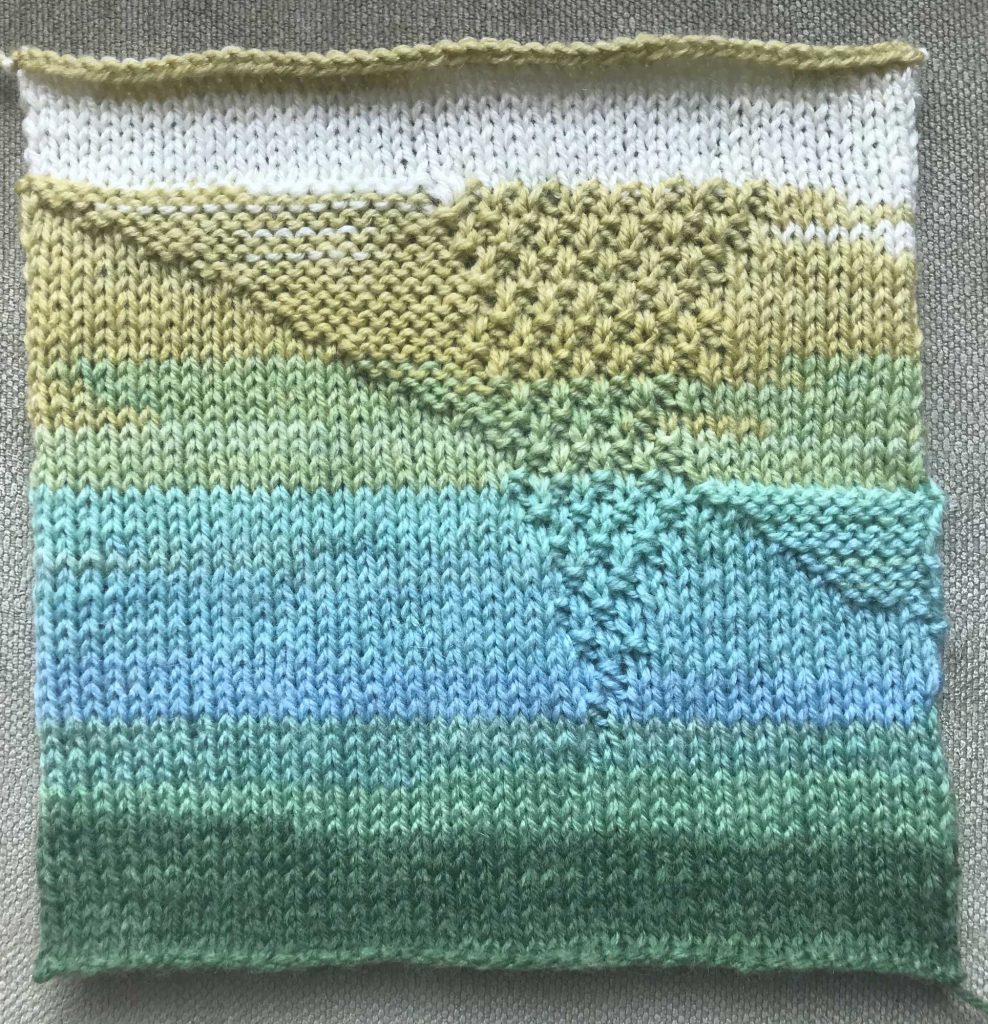
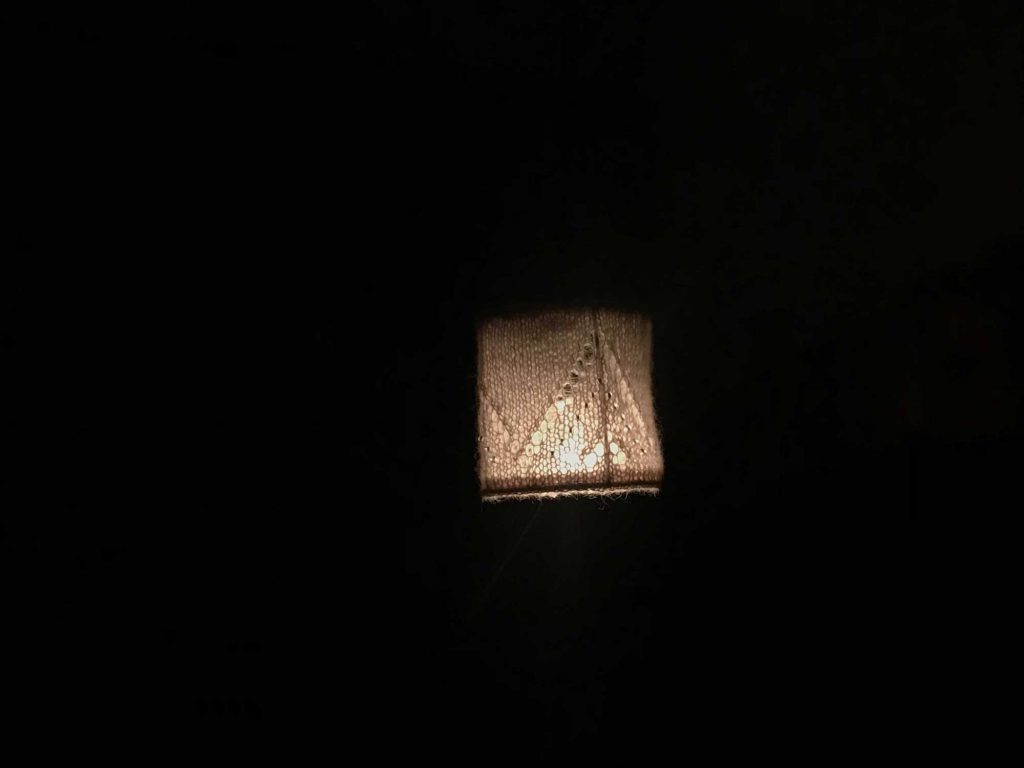
It really made me understand the process of working out how the stitches work. In the future I would love to do the next levels, Skill Stage 3 and 4 so that I can start to design my own pieces as well as teach. But this is definitely a long term plan and I will be continuing to work on this over the next few years as these courses are definitely worth.
For me is has really opened my eyes to what knitting means and how it works, and how you can work with it and develop your own pieces. However, you need to be able to dedicate time to the course and not be disheartened if something does not go right for you.
In one module I needed to sketch what I could see. I have no problem saying my drawing ability is that of a 5 year old, which really frustrated me and stopped me from proceeding for quite some time. But when I actually sat down and just did it and handed it in, it ended up being the work I was most proud of.
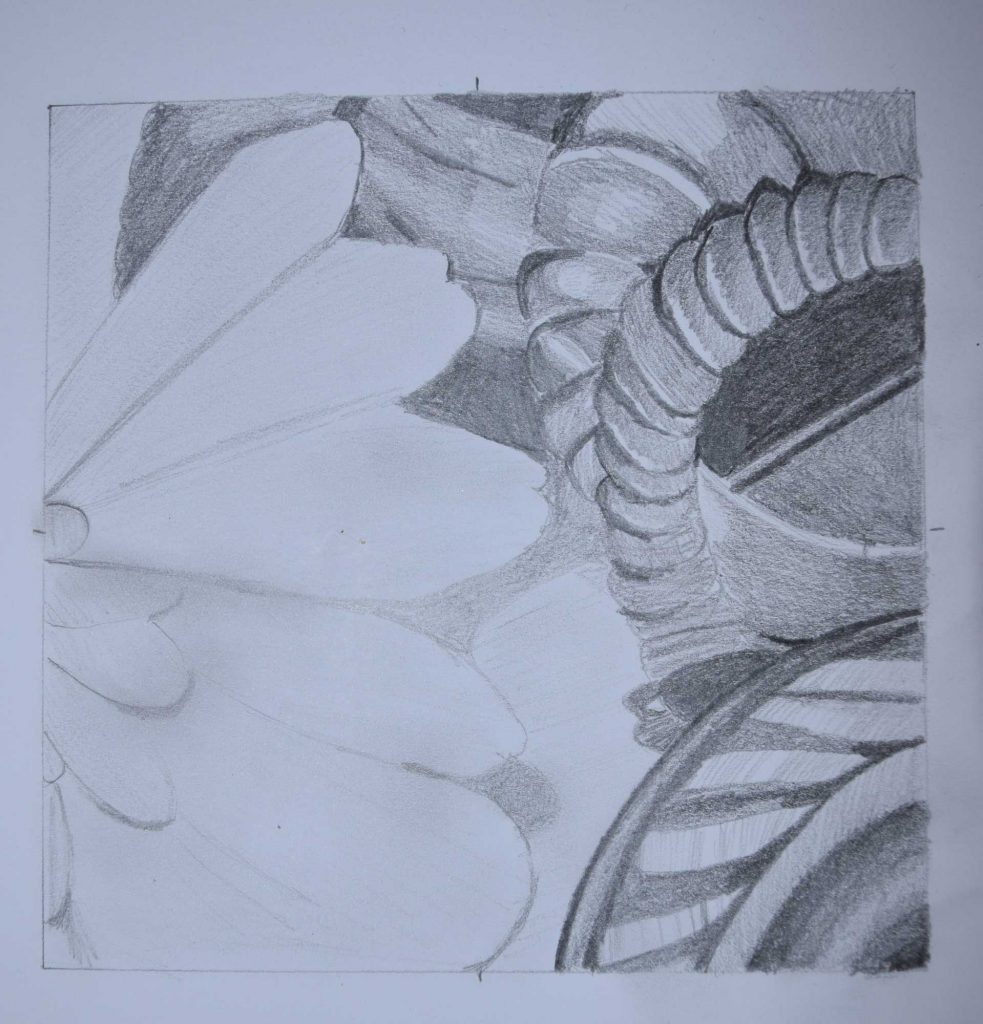
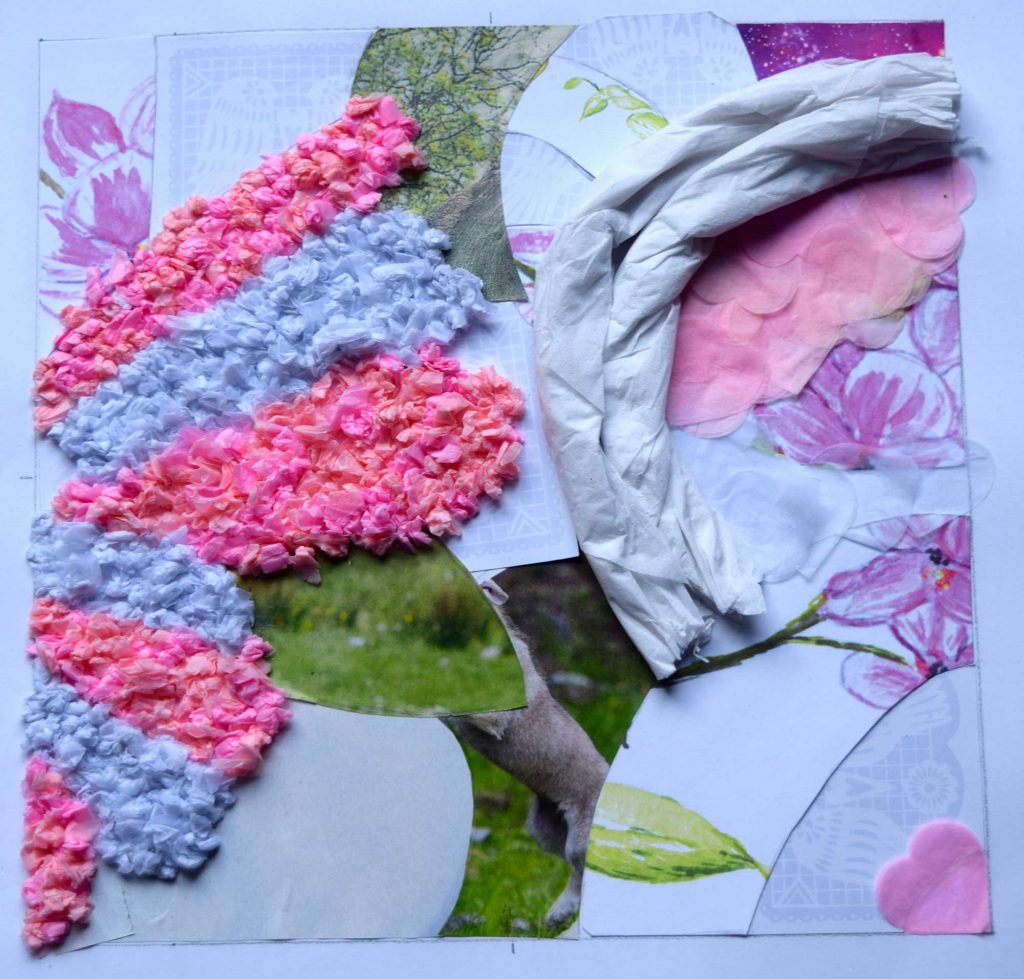
The modules which include drawing can be daunting for many students. However, being able to sketch is not a prerequisite to doing the course. We have a lot of resources to help students. If, like Laura, you you find drawing a challenge then please take a look at our online beginners course, Learn to Drawing for Design.
Thank you, Laura, for taking the time to talk about your experience and for successfully completing the course.


